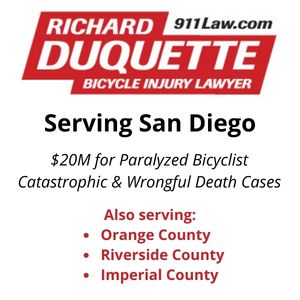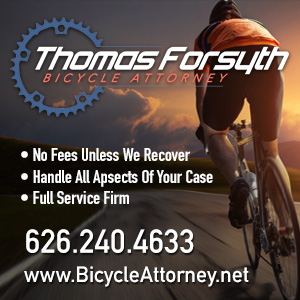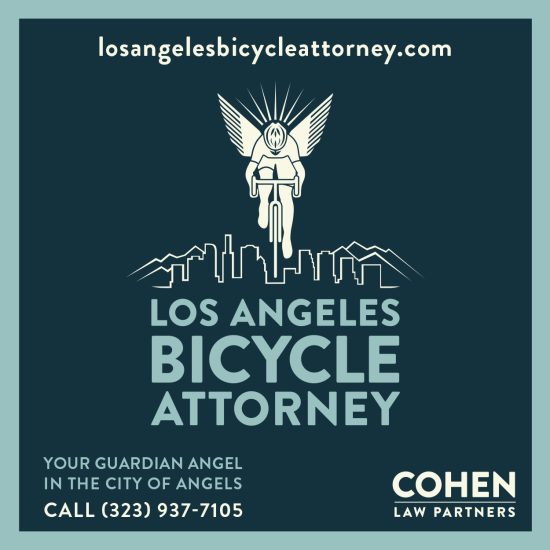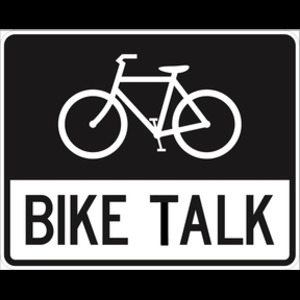Once again, a killer driver gets off with a virtual pat on the back for decreasing the excess cyclist population.
What else can you call it when the driver pleads to reckless driving, bargained down from an original charge of vehicular manslaughter? And gets off with an obscenely lenient 10 days of community labor, 400 hours of community service and a whopping $4000 in restitution and other fines.
That’s what the life of a human being is worth these days. If he’s on a bike, anyway.
Ten days. Four hundred hours. And at least $4000.
Who knows, maybe they’ll go hard on him and make it $4050.
That’s what Siddhartha Misra got from a Pasadena judge on Tuesday in his trial for the death of cyclist and musician Alan Deane.
And this for a fatal collision that was caught on video, and reportedly showed the driver failing to yield before fatally slamming into Deane on his bike.
And he apparently gets to keep his driver’s license.
So much for keeping dangerous drivers off the road. Let alone sending any kind of message that would encourage careless motorists to slow down and pay a little more attention for fear of the consequences if they didn’t.
If this is what passes for justice around here, I’ll pass.
Maybe our new DA will decide that bike riders have a right to get home alive.
Misra made a statement to the court apologizing for his actions and saying it’s a heavy burden he’ll have to live with until the day he dies.
I have no doubt that he’s sincere in his remorse. Lord knows I couldn’t live with myself under the same circumstances.
But I can assure you Deane’s family feels a hell of a lot worse.
………
A 63-year old Long Beach cyclist suffers a broken hip and rib when the victim of a hit-and-run; her son reports she was trapped under the car, and the driver actually backed off her to get away.
Anyone with information is urged to call the Long Beach Police Department Accident Investigation Detail at (562) 570-7355.
………
Big news in pro cycling — and good news, for a change — as USA Cycling finally puts women’s cycling on the same footing as men, with equal prize money and championships on the same weekend.
Now maybe the Amgen Tour of California and the USA Pro Cycling Challenge will figure out a way to get a women’s peloton on the course.
Chances are, they’ll get just as exciting racing — if not more.
And maybe even fewer former (?) dopers.
………
An Op-Ed in the L.A. Times says NBC Universal’s agreement to extend the L.A. River through their property is a good start — but until the other studios in the area fall in line, it’s just a start. Santa Monica considers $326,000 in improvements to the beachfront bike path through the city. Will Campbell plays Let’s Make a Deal as he just avoids the door prize, twice.
Fullerton joins with Bike Nation to develop a bike share program, as the latter seems to be developing the critical mass (lower case) for a pan-SoCal system; thanks to Lois for the heads-up. San Clemente considers a road diet — including bike lanes — on El Camino Real. Pomona replaces parking near Cal Poly with bike lanes. A Bay Area news site offers tips to ride safely following the tragic cycling death of a 12-year old girl. A San Francisco schmuck motorist hits a cyclist and drives off with his bike stuck under his car. Sonoma County Supervisors consider an L.A.-style cyclist anti-harassment ordinance; this would be the first to be adopted on a countywide basis. No really, if you’re carrying meth and a pipe after dark, put some damn lights on your bike.
The Alliance for Biking and Walking is accepting nominations for bike and pedestrian advocates and organizations. CNN discovers tweed rides and Cycle Chic — as well as our own Melissa Balmer of Women on Bikes SoCal. Honda says it’s okay to take a little nap behind the wheel. New bike-themed apartment complex opens in Denver, featuring bike storage, a repair room and even free bikes for tenants; so when can we move? Been awhile since we’ve checked in with Dottie at Let’s Go Ride a Bike; she offers a typically beautiful — for her — look at fall riding. A Pittsburgh cyclist says the driver who hit him did it deliberately. A Concord writer says he’ll take bike racks over bike lanes. Boston police warn cyclists about dangerous streets just hours before a cyclist is killed. Boston’s BikeyFace illustrates a downloadable bike safety poster. How New York can fight salmon cyclists, or not. Would you wear your medical information coded on your helmet?
Ontario townsfolk pitch in to replace a boy’s stolen bike. A Toronto physician is arrested protesting the removal of a bike lane. The London Standard says you don’t have to be Bradley Wiggins to deserve a safe ride home. Brit runners following a bike in a race end up following the wrong one. Maybe bike-friendly Bristol isn’t so bike-friendly anymore. Town Mouse’s mum would vroom away from red lights if only her town had any. After losing his license and property, an Aussie cyclist says the only thing bike helmets are proven to protect riders from is fines; my thick skull would beg to differ.
Finally, a Tennessee letter writer evidently assumes all cyclists ride as a hobby — and that local parks just magically appeared. And apparently, a British ad agency is going out of their way to develop the most offensive bike safety campaign yet; it may have been a misguided attempt at viral marketing, but at least they apologized.
Maybe instead of all this apologizing, we could try avoiding things that have to apologized for. Just a thought.






